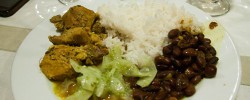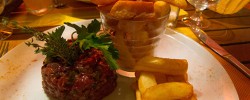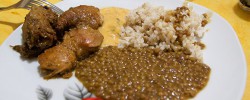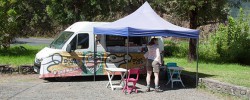Gîte du Volcan (Reunion, France)
Like I had mentioned in my review of Gite de la Caverne Dufour, the island of Réunion has several classic hikes recommended to visitors, like watching sunrise from the Piton des Neiges. Another of these classic hikes is to visit the other volcano on the island, the Piton de la Fournaise (“Furnace Peak”). It’s rather a different hike, since this volcano is one of the most active volcanoes in the world, erupting on average once every nine months, and much more frequently recently (6 weeks before our visit, 2 weeks after, and yet again just last week), so you are hiking across lava plains instead of hiking up tall peaks. But the basic approach is still the same: most people stay at a local Gite the night before, and then hike to the inner caldera in the relative cool of the morning. In this case, it means staying at the rather nicely appointed Gite du Volcan, located at Pass de Bellcombe on the north rim of the volcano’s outer calder (facing the coastline, not the interior).












